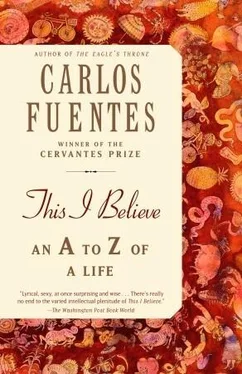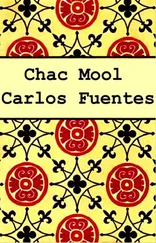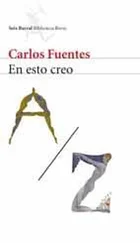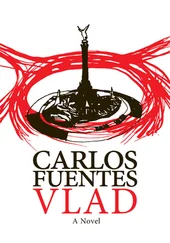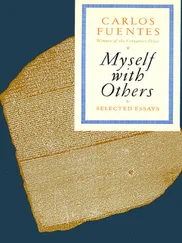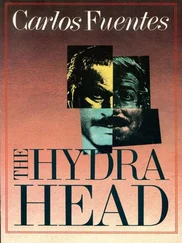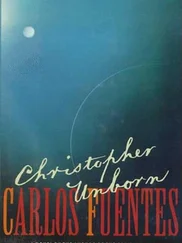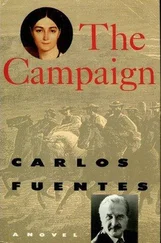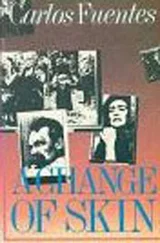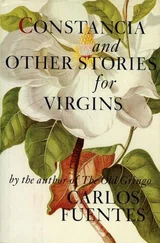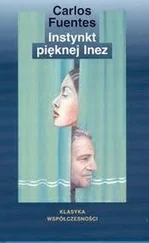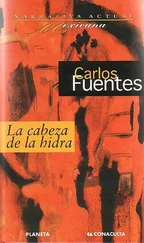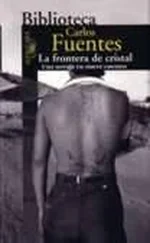Washington was the city of my childhood, which was punctuated by summer vacations in Mexico under the charge of my splendid, valiant grandmothers. Washington remained with me as a long, burning, Faulknerian summer, with the smell of black men’s sweat, of rotting parks, of slow, heavy rivers, of scratches the flavor of raspberries, of blazing movie theaters where Hollywood concealed the miseries of the Depression behind the erotic charm of Fred and Ginger dancing, the anarchistic, outrageous comedy of Laurel and Hardy, the marvelous reinvention of the comic Eve — as exemplified by Irene Dunne and Carole Lombard, accessible and ironic compared with the inaccessible sexual remove of Greta and Marlene, the divas of Europe. Why do I remember all of this as part of a summer I scarcely lived through, rather than the winters when I would ride my sled to school and was rewarded, each week, with two unforgettable trips to the movie theater, clutching my father’s hand?
Today I detest Washington. Everything that loomed large in my childhood became dwarflike in my older age: the parks, the avenues, the houses, the politics, the politicians. . Comparable to a great cemetery of Greek mausoleums, Washington, like Buenos Aires, is an invented city, one without preexistence. But whereas Buenos Aires conjugates Pampa and ocean with the poetry of Cortázar, the music of Discépolo, and the voice of Goyeneche, Washington is nothing but a cemetery that stretches out toward the vast nothingness of Highway 1 that runs from the Atlantic to the Pacific, from the European entrance to the Asian exit, to a New York that has grown more and more repetitive, arrogant, vulgar, and, paradoxically, friendlier, more original and welcoming, but always Gotham, city of unbearable energy that imposes itself upon us, sucks our very existence from us, makes us believe that its vitality also belongs to us, passive and deceived by the whirlwind of the Big Apple and its nightmare of cocktail parties where nobody gives anyone else more than a fleeting glance and two seconds of conversation, but where the presentation of the film Hamlet can spark, at intermission time, some of the most animated and lucid debate ever heard among an audience of young people. .
My present distance from New York may very well be due to my former closeness. The New York where I lived during the 1960s was a tribal space of childhood recognition. We were a gang of friends, we shared women, reading, bars. The enthusiastic fervor of the age was what united us. The mutual discovery of the new Latin American literature by the North Americans, and the literature of North America by the Latin Americans united us as well. Manhattan stretched out to the farthest tip of Long Island and its tribe of young, dynamic playwrights, all the way up to Martha’s Vineyard and then back down Second Avenue to end up inevitably in the fiefdom of Elaine’s with all its habitués, and then the glorious young women showing off miniskirts, long manes of hair, and bodies that undulated to the rhythm of the Watusi amid the lights and shadows of the Peppermint Lounge, before waking up, melancholy, to the sound of the marvelous Cannonball Adderley and compensating for all that we lost out on in the nighttime with summer mornings in our penumbral bedchambers, barely allowing the July heat to filter through the brisk shadows of a youth we imagined would never end. . And as I have not rediscovered that thing that I can only evoke in my memory, I unfairly blame the city that I once felt was so very much mine and that now seems so foreign to me. Nowadays, who plays the African flute of the melancholy Brother Yusef Lateef in a city that has succumbed to celebrity, money, and Darwinian disdain? Oh, the paradox: the first and only world power, so full of itself, indulges in the luxury of scorning international information. With the exception of the two coasts — New York and Los Angeles — one looks in vain for international news on television or in the newspapers.
And one terrible day — September 11, 2001—horror would wake up New York, eradicating all its egotistical liturgy and resuscitating all its solidarity, all its heroism, all its human fraternity at this its most frightful hour. For how long? I don’t know. I only know that nobody can destroy the energy of New York.
It takes longer to fly from New York to Los Angeles than to London or Paris. A Los Angeles increasingly lost in its labyrinth of freeways and its continental shock: how is it possible? This is where America ends, this is where everything crumbles into the sea, where there is no more frontier to conquer. California, the slide area. And then, right there in the middle of the continent, a great city, in love and beloved, the city that loves itself and makes its visitors fall in love with it: Chicago, that toddlin’ town, the city of broad shoulders, where the men take their wives out to dance. .
The North American landscape invites all kinds of generalizations regarding uniformity, void, the immense and tedious plains, ignorance, lack of information, provincialism. . But those very stereotypes are what spur a person to prove it wrong, to celebrate the discovery of an unknown house by Frank Lloyd Wright in the Midwestern plains; Goya’s marvelous portrait of Pedro Romero, the founder of modern bullfighting, in Fort Worth, Texas; the largest, most complete bookstore in the world, tucked in between the lovely rivers of Portland, Oregon; Richard Ford on a quiet street in the hushed nostalgia and elegance of New Orleans; William Styron and his dog walking along the beaches of Martha’s Vineyard; the Plaza hotel’s perfect martini; Dorothea Straus conquering the streets of Manhattan every afternoon with the stride of an Amazon and an outfit straight out of the Belle Epoque; a bordello of Chinese gay men in San Francisco; the original manuscripts of the Spanish colony in the Ann Arbor Library; the melodious laughter and the warm breasts of the girls in Boulder, Colorado; the proud profile of the Chicano student in San Antonio, Texas; the heady aroma of ink, wood, and leather in Harvard’s Widener Library; the ironic wisdom of the great Democrats, Arthur Schlesinger, John Kenneth Galbraith.
And so I reach a conclusion. Cities cannot bear to be compared. And “America” is a uniform illusion that is dreamed of in Hollywood like Gene Kelly and Cyd Charisse: “I dance, therefore I am.” There is the “America” that endlessly bemoans the loss of its innocence in Boston or Long Island (Henry James, F. Scott Fitzgerald). There is the “America” that was never innocent in the first place (Richard Wright’s Natchez, Mississippi, James Baldwin’s Harlem), and the “America” that was always violent, corrupt, and supremely indifferent to the national idyll (Chandler’s Los Angeles, Hammett’s Poisonville).
There is one city to which I owe my passage from adolescence to adulthood, where I disciplined my life, focused my mind, and organized my work as a writer. That city, for me, is Geneva: my incomparable attic flat on the Place du Bourg-de-Four, the Forum Boarium founded by Julius Caesar; the Café de la Clémence right in front, for conversations with friends; the Café Canonica with the view of the lake for chatting up hookers with dyed-blond hair and lapdogs; the university for meeting and falling in love with women who bore the scent of youth and love-filled awe; the disciplined, ancien régime atmosphere of the Institut Universitaire de Hautes Etudes Internationales and its coterie of star internationalists such as Brierly, Bourquin, Ropke, Scelle, who graced me with their teachings; the bookshops of the Vieille Ville where I would buy old editions of the French classics and read them in the tranquillity of the Île Jean-Jacques Rousseau between the Rhône and the Léman. .
Cities of supreme peace and contemplation. The Sevilla of Muslim, Christian, and Jewish equilibrium. Jade-colored Oaxaca, the only city with a peacefully unified silhouette of the indigenous and the Spanish. A Berlin resurrected, amid the dreams rocked back and forth by the proximity of a hundred lakes. Cartagena de Indias, the perfect city of the colonial Caribbean, encircled by walls to fend off the English pirates of yesteryear and the drug-trafficking guerrillas of today: the miraculous oasis of a ghostly, blood-squeezed country. Savannah, Georgia, a city that Borges must have invented, plazas that branch off into streets, which lead to more plazas that branch off into more streets in an infinite, perfect geometric web, though in the end it is as desolate as a de Chirico painting.
Читать дальше
